Desired dough temperature
The key to achieving consistently great results in your bread baking
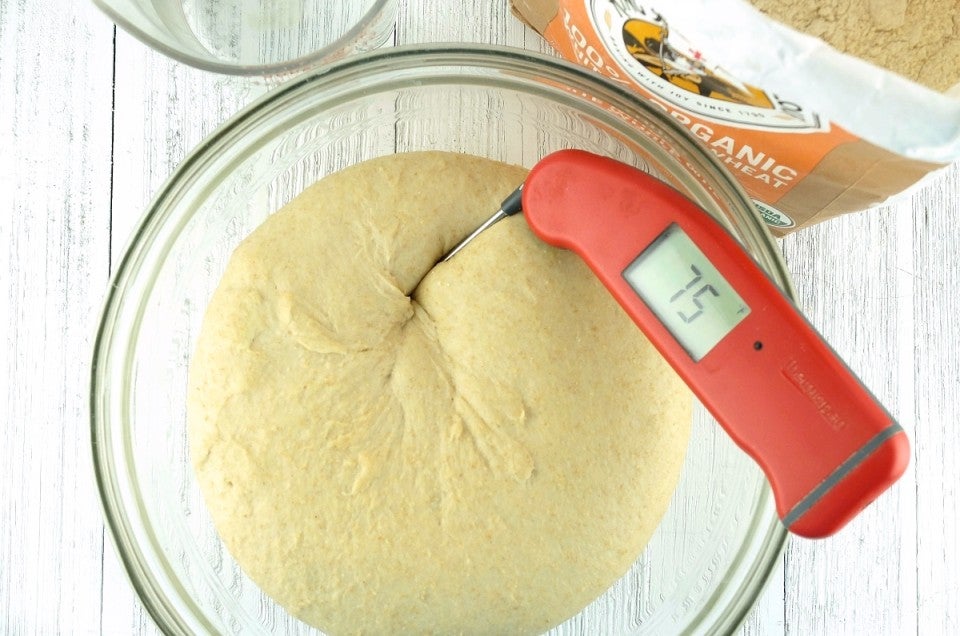

When the seasons change it's not uncommon for our Baker's Hotline to hear from frustrated bread bakers who can't understand why their favorite bread recipe has suddenly turned on them.
"I'm doing everything exactly the same, but my bread is falling in the oven."
The problem is that while you're doing everything the same, the conditions in your kitchen have changed.
As warmer weather arrives, your kitchen (and the ingredients stored in it) are heating up. These changing temperatures affect how your dough performs, even when you keep faithfully to your baking routine.
So, what’s one thing you can do right now to improve the rise, appearance, and flavor of your yeast breads?
Learn to control the temperature of your dough, from mixing through kneading.
Bringing your yeast dough to what professionals call the desired dough temperature (DDT) helps ensure consistently great results — winter, summer, or anytime during the year.
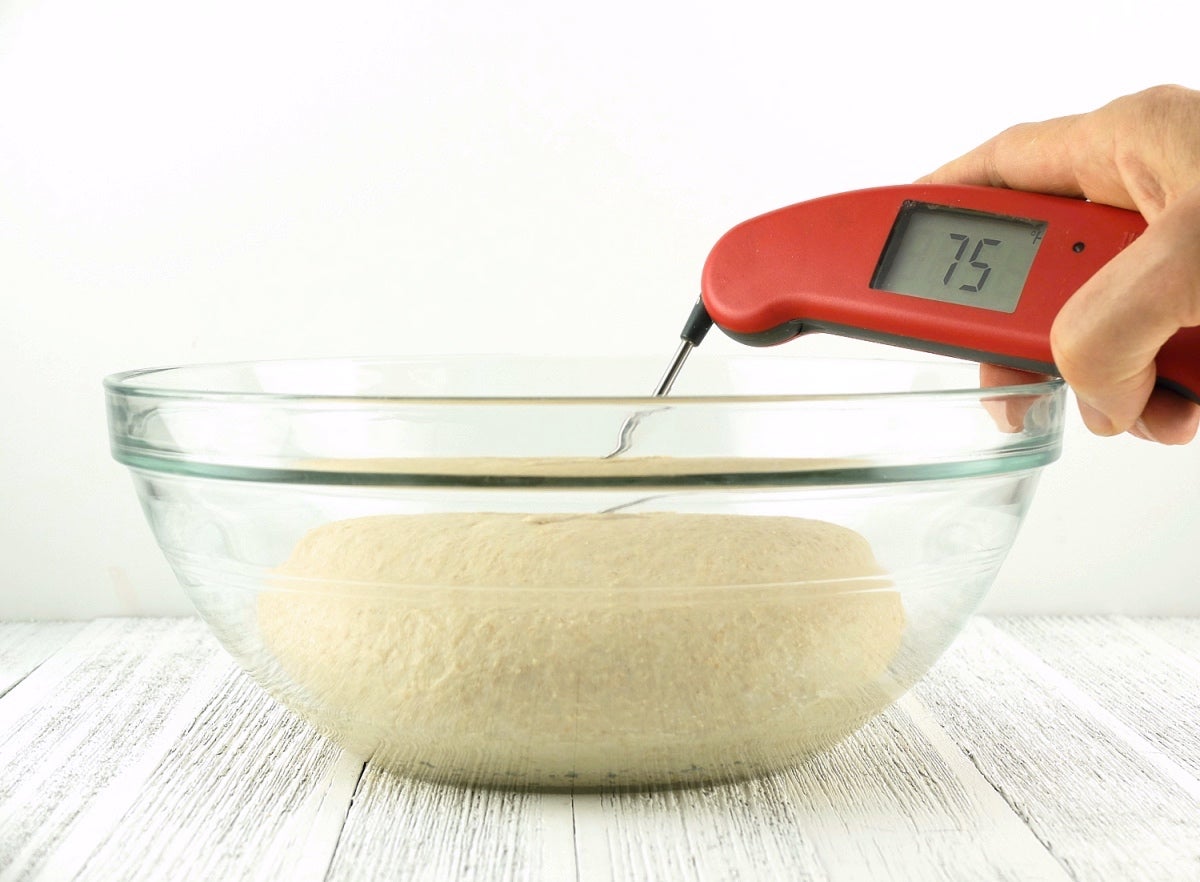
Professional bakers are expected to provide consistent results each and every day. They know that being able to control the temperature of their dough is the key to achieving consistency.
They also recognize that there are ideal dough temperatures for different types of dough, and maintaining temperatures within a specific range will lead to the best flavor and rise in their breads.
For wheat-based yeast breads, professionals have determined that the ideal dough temperature range is 75-78°F.
How do you achieve an ideal dough temperature day after day — despite changing conditions?
There are several main factors that impact dough temperature:
Friction factor — what’s that? It’s how much your dough temperature rises during mixing and kneading. This figure is an approximation because many variables affect how much heat is generated during the mixing and kneading process, and it can change significantly from one dough to the next. A future blog post will examine how to calculate the friction factor, but for now I've determined two friction factors:
So, back to DDT. Of these four factors, which one can the baker easily adjust? You guessed it—water temperature.
The Desired Dough Temperature Formula offers a way for bakers to calculate the factors that influence dough temperature, in order to determine the one factor they can easily control: water temperature.
First, pick the temperature you want your dough to be at the end of mixing and kneading. For this example, our target dough temperature is 78°F.
Desired Dough Temperature (DDT) = 78°F
Next, multiply the DDT by 3 (the number of variable temperatures other than water temperature that affect dough temperature: room, flour, friction).
Note: If you bake with an overnight starter or pre-ferment, multiply your DDT by 4 instead of 3, and include the temperature of the pre-ferment as another factor to subtract.
78°F X 3 = 234°F. This is the Total Temperature Factor (TTF).
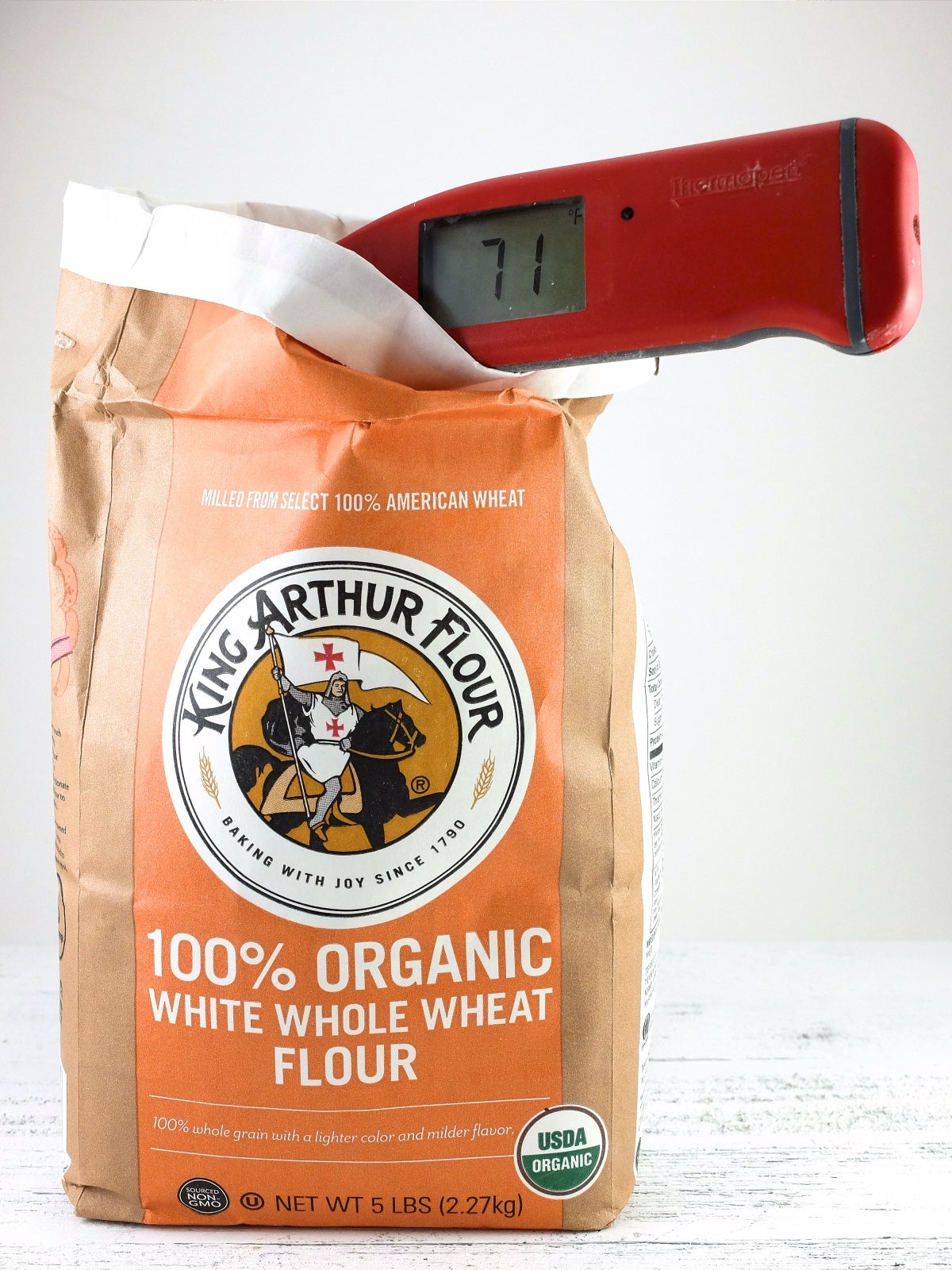
Starting with 234°F, the TTF, subtract the actual room temperature and flour temperature, along with the predetermined friction factor:
234
- 72°F (room temperature)
- 71°F (flour temperature)
- 22° (friction factor)
= 69°F (water temperature)
By subtracting the factors we're less able to control that contribute to dough temperature, we can determine the correct water temperature to use in order to achieve our ideal dough temperature.
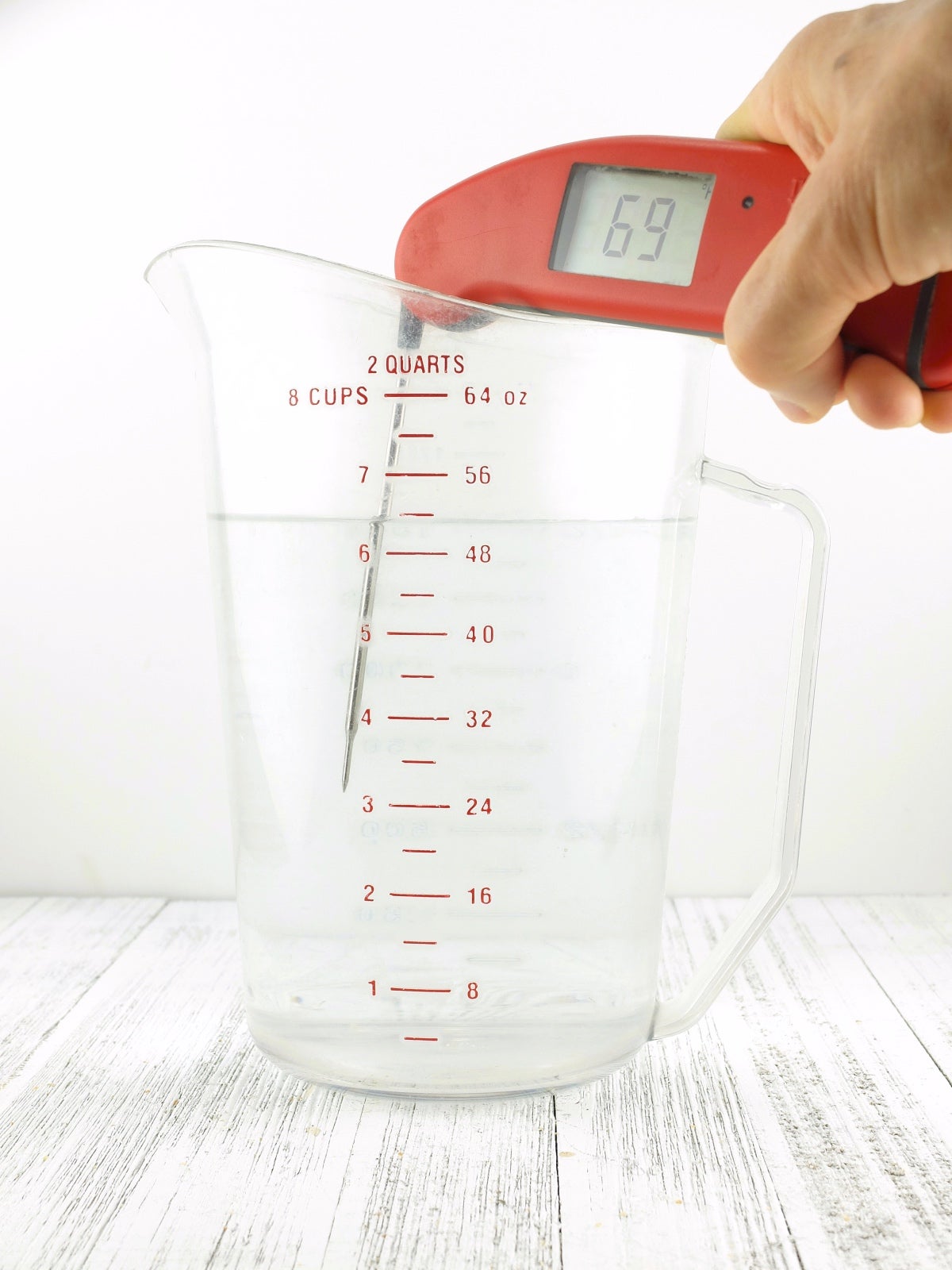
“But 69°F is so cool; doesn’t yeast have to be dissolved in lukewarm water?”
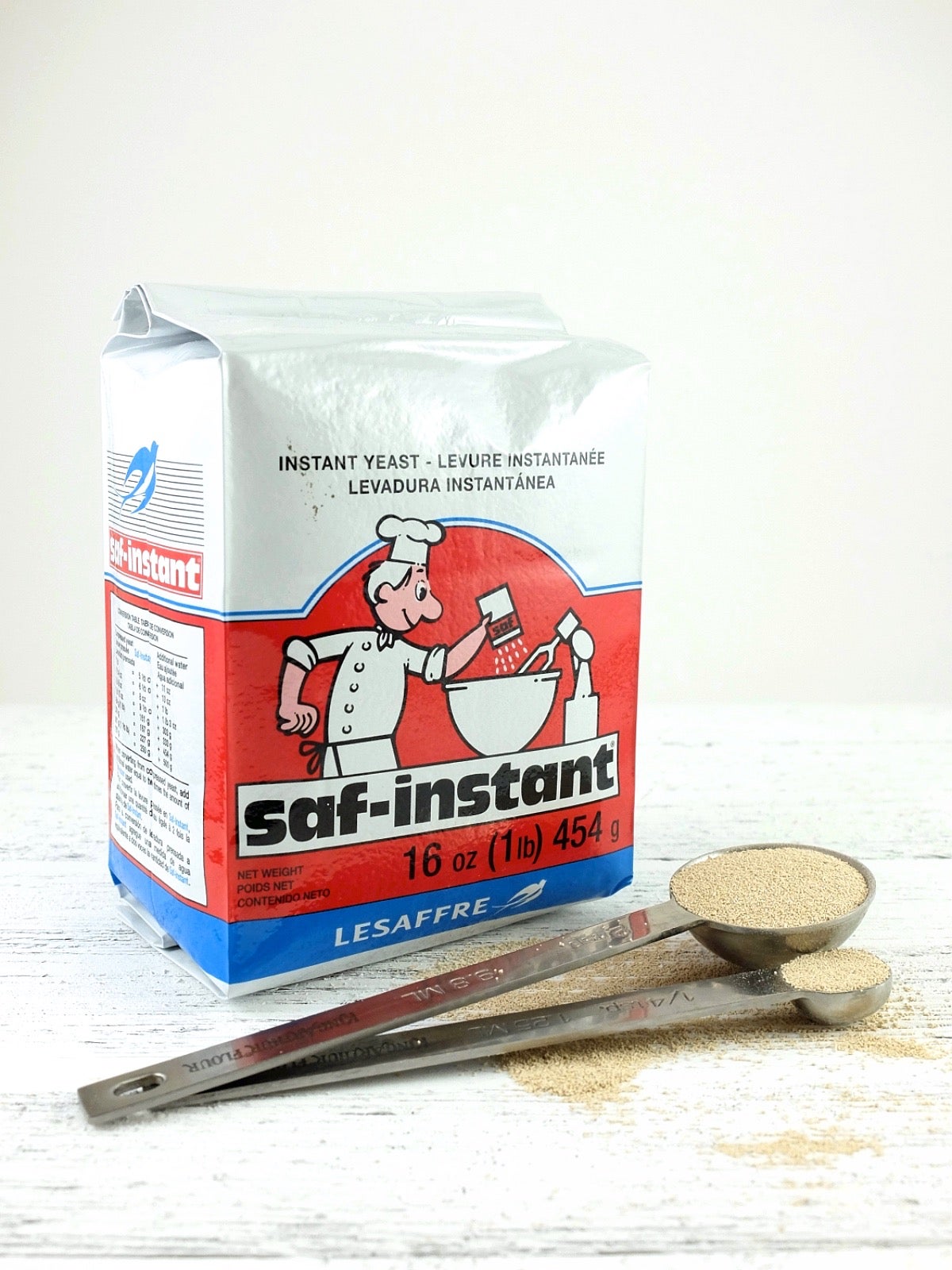 One of the great advantages of using instant yeast is that not only can you stir it in with the flour, you can also use cool water!
One of the great advantages of using instant yeast is that not only can you stir it in with the flour, you can also use cool water!
It's not recommended that you expose instant yeast directly to water cooler than 70°F; so mix the flour and instant yeast together before introducing the cool water in order for the yeast to activate properly.
Active dry yeast users take note: Normally it's fine to combine active dry yeast (ADY) and flour without dissolving the yeast in liquid first. But when using cool water, ADY may not activate properly. We recommend dissolving ADY in a small portion of the recipe water (about 3 tablespoons) that's been warmed to 110°F. Allow the yeast mixture to proof for 10 to 15 minutes before adding to the remaining cool water and flour.
How do different dough temperatures affect dough development and the flavor and rise of yeast breads?
Let's find out by mixing three different doughs: one with very cool water (50°F), one with very warm water (120°F), and one with "just-right" water using the DDT formula.
I'll use our King Arthur's Classic White Sandwich Bread recipe, substituting our Organic White Whole Wheat flour for half the all-purpose flour (just because I like some whole wheat flour in my sandwich loaves).
I'll stick to a 60-minute first rise, as well as a 60-minute shaped rise. (Of course, in real life you want the dough's progress to be your guide, not the clock.)
When using cool or cold water, mix the flour and instant yeast together first, before adding to the water. If you store your yeast in the freezer, allow it to come to room temperature when working with cold water.
When mixing with 50°F water, my final dough temperature after mixing and kneading in my stand mixer is a surprising 72°F — not nearly as cold as I expected!
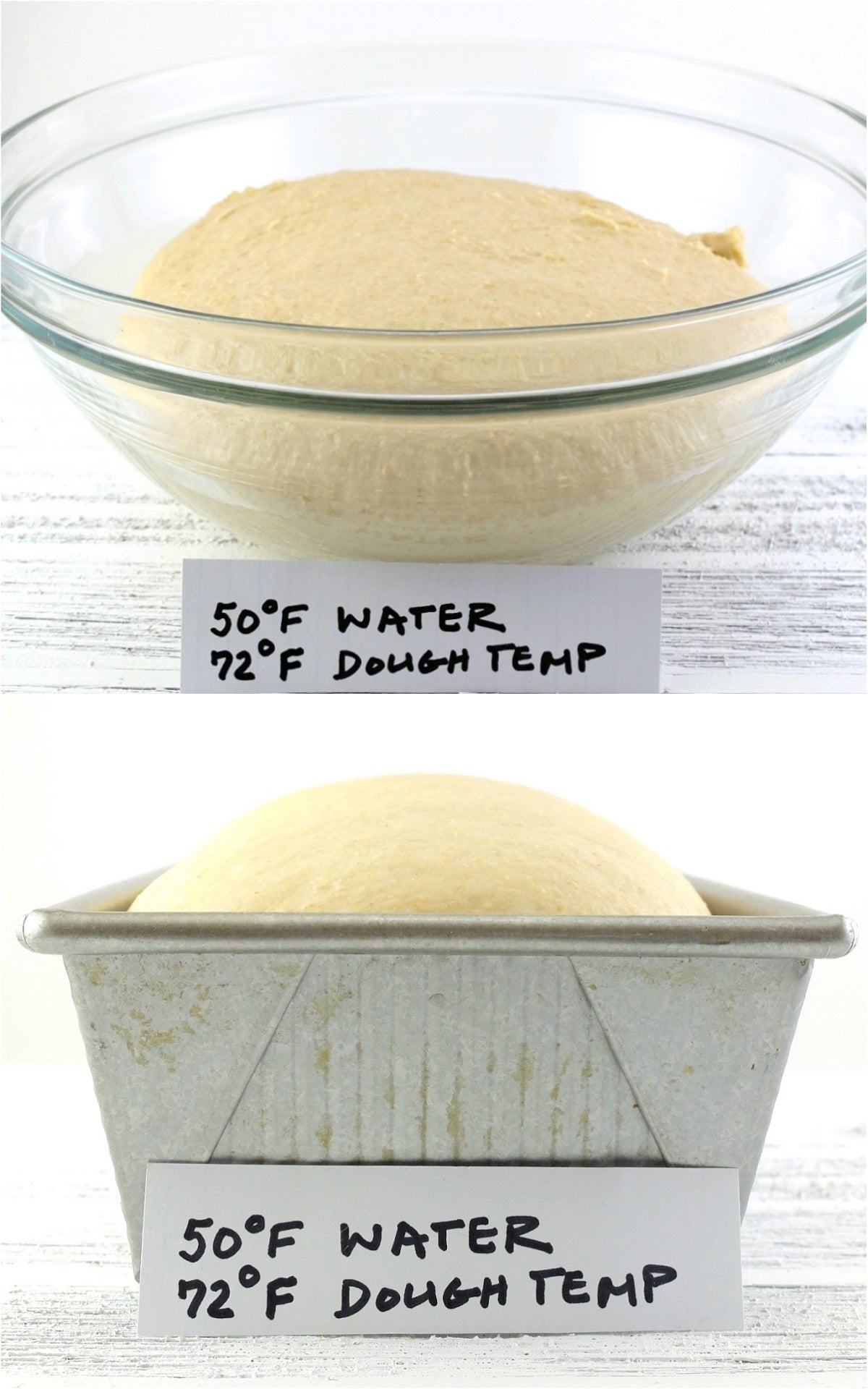
The dough’s first rise (in the bowl) is definitely sluggish (though apparent). After an hour in the pan, the loaf is ready to bake.
After mixing and kneading in my stand mixer with very warm water, the dough is a toasty 94°F.
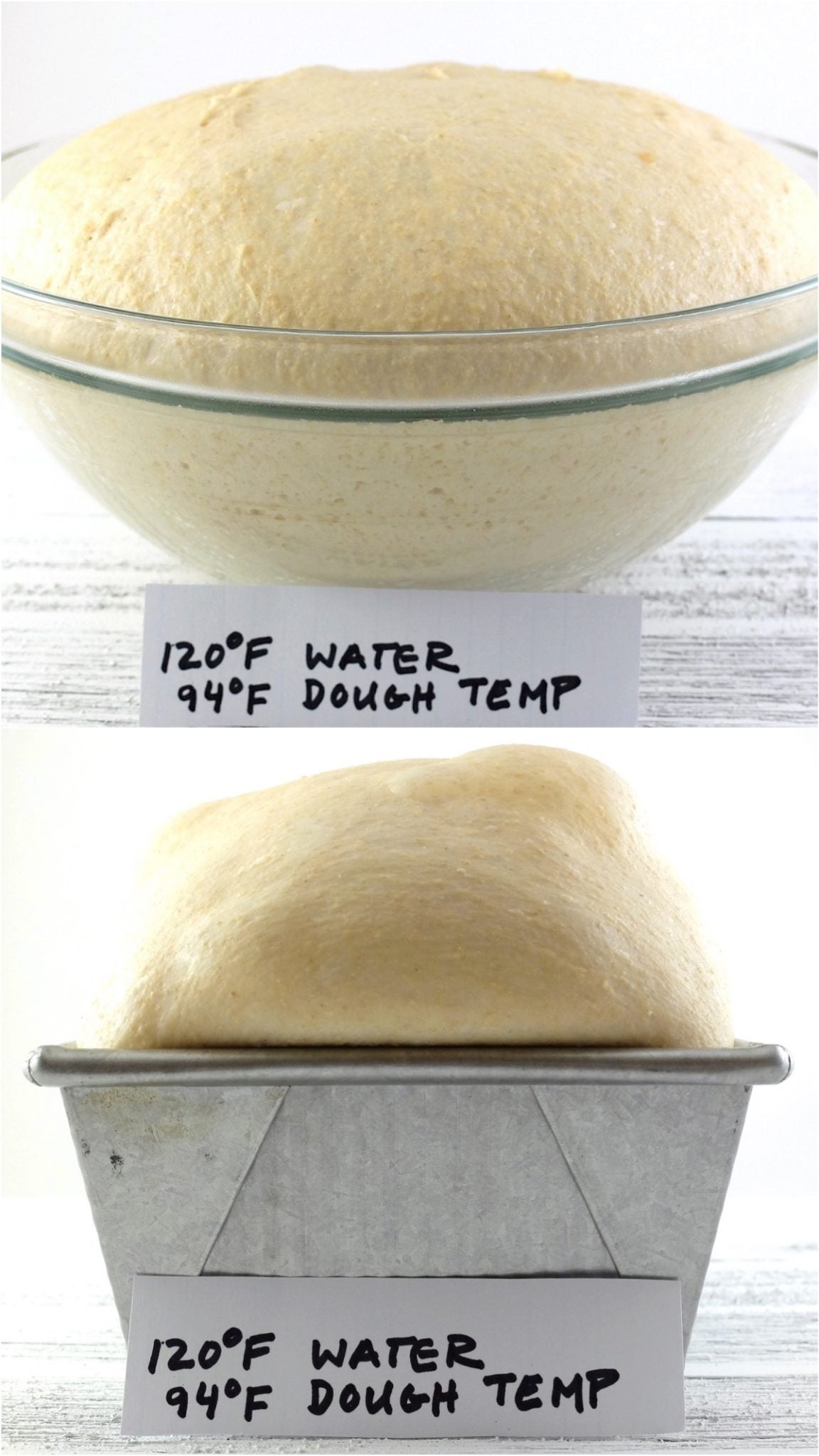
Predictably, the first and second rises are much more dramatic than the dough mixed with cool water. But see how the top of the loaf is starting to bubble up and sag? This loaf is definitely over-proofed.
Finally I use the desired dough temperature formula to determine the water temperature for my last mix.
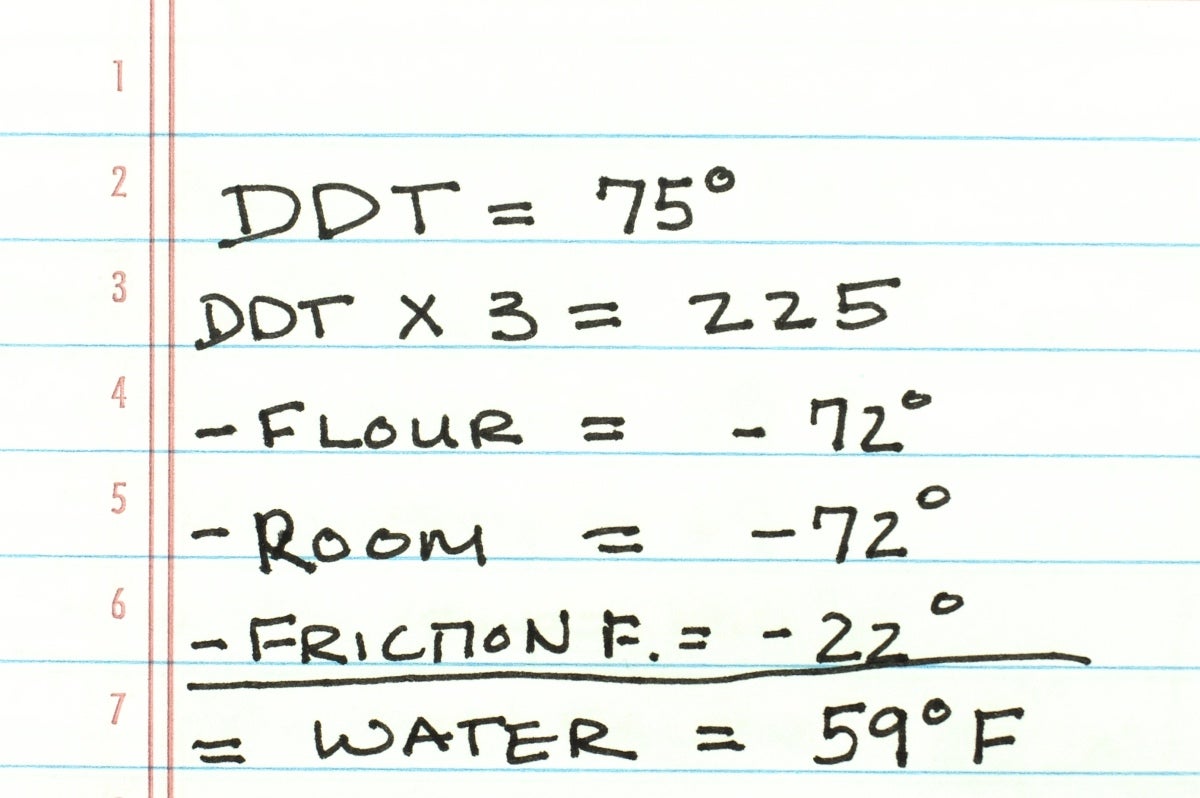
I aim for a desired dough temperature of 75°F. Because my kitchen has warmed up over the course of my baking day, the calculated water temperature is only 59°F!
After mixing and kneading in my stand mixer, the dough is exactly 75°F.
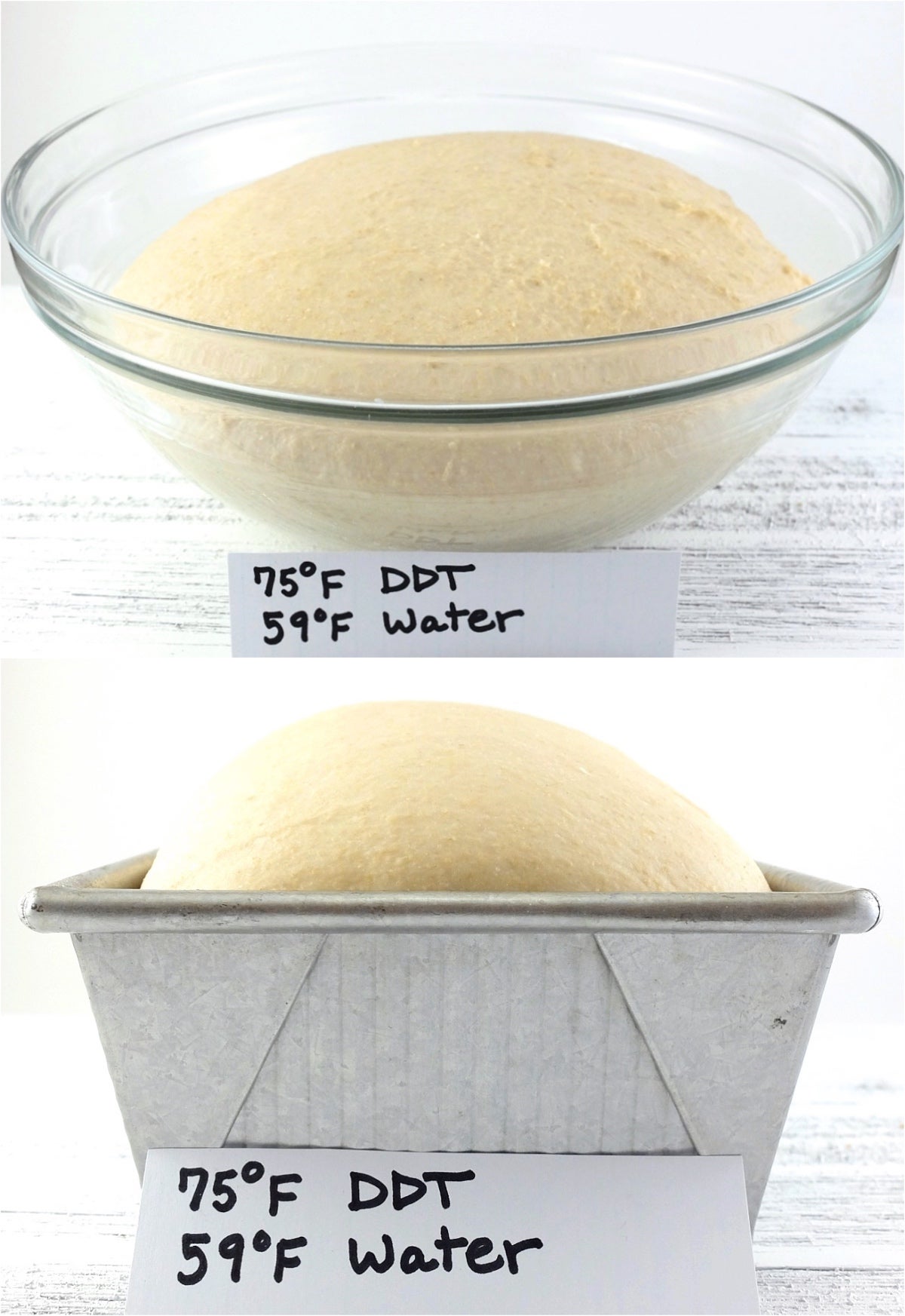
75°F dough almost doubles in size after the first rise, and after the second rise it's looking just about perfectly proofed and ready for baking.
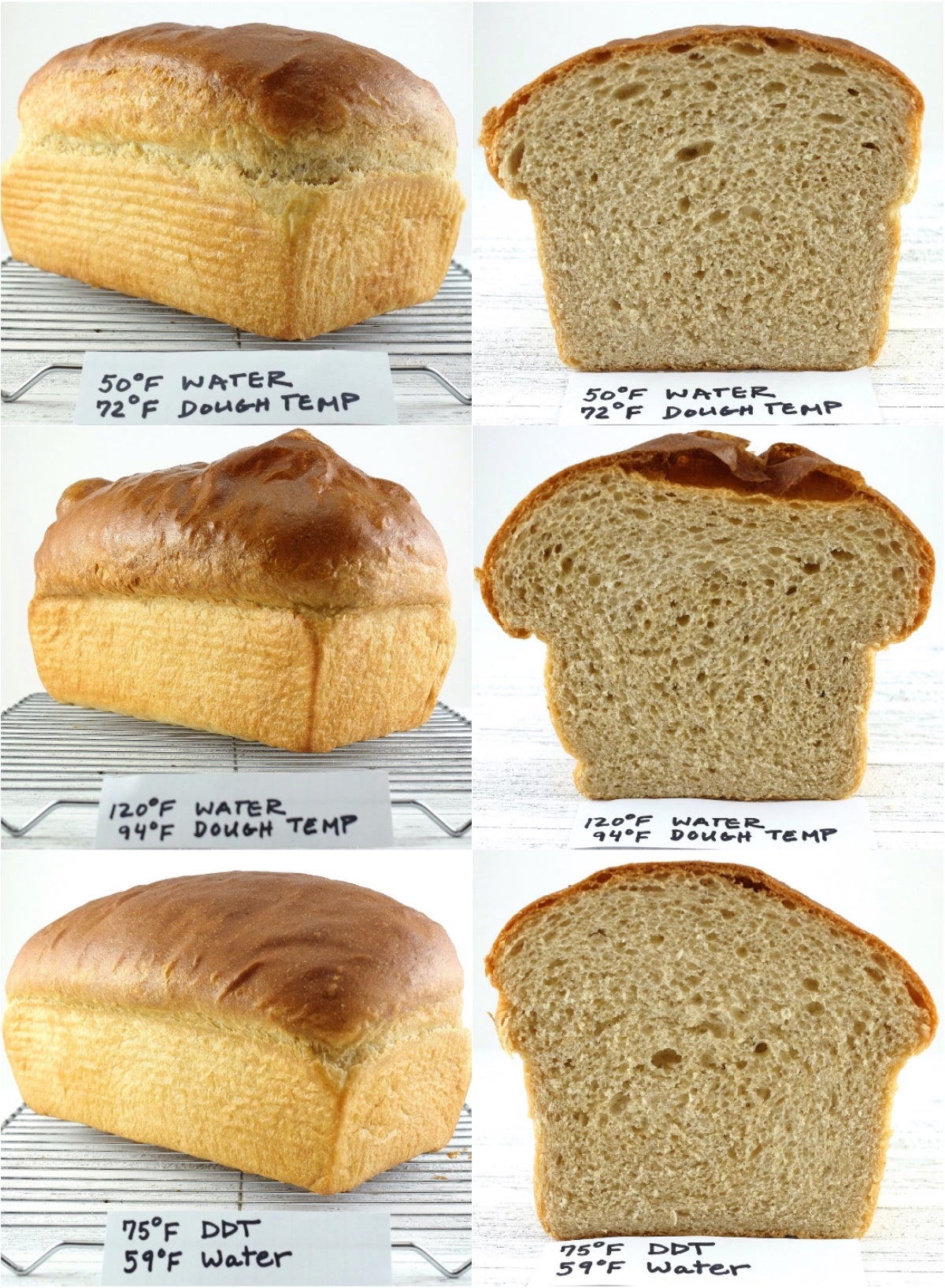
Dough #1 (50°F water) bakes into a slightly smaller loaf, but it's still a nice size with an even crumb structure.
Dough #2 (120°F water) doesn’t fall in the oven, as I feared it might. However, the bubbles are still evident on top of the loaf. And as it cools the surface collapses, resulting in lots of wrinkling. A little isn’t uncommon, but this loaf shows significant wrinkling and a large gap beneath the top crust.
Dough #3 (DDT 75°F) wins with the nicest rise and crumb structure, although Dough #1 is a close second. This isn't too surprising, since the difference in dough temperature between these two is only 3°F.
Dough #1 and #3: loaves have a moist crumb and a rich, slightly sweet, wheaty flavor.
Dough #2: loaf dries out more quickly than the other loaves, and has a bitter, acidic flavor.
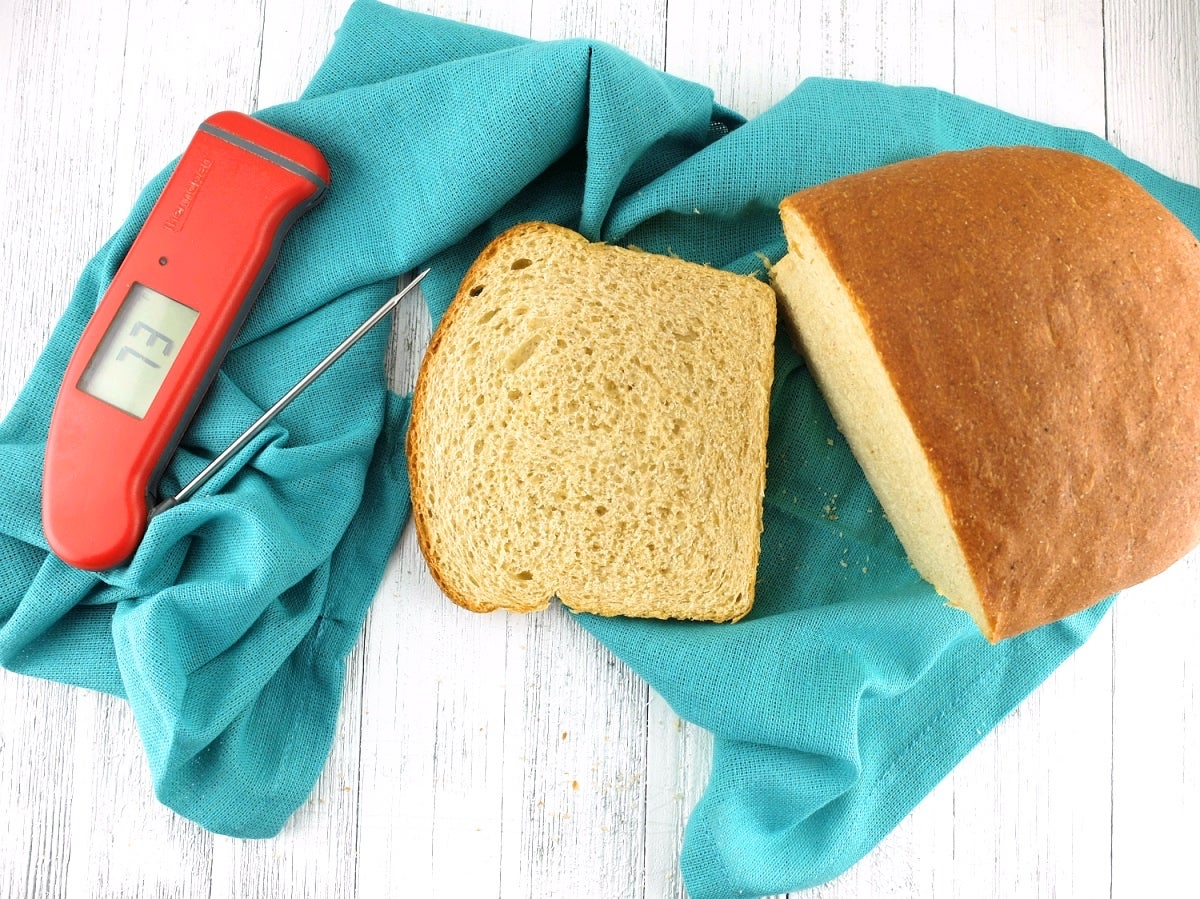
Stay tuned for a future blog post covering the friction factor. Meanwhile, we hope you'll put the DDT formula to the test in your own bread baking, and share your comments and questions below!